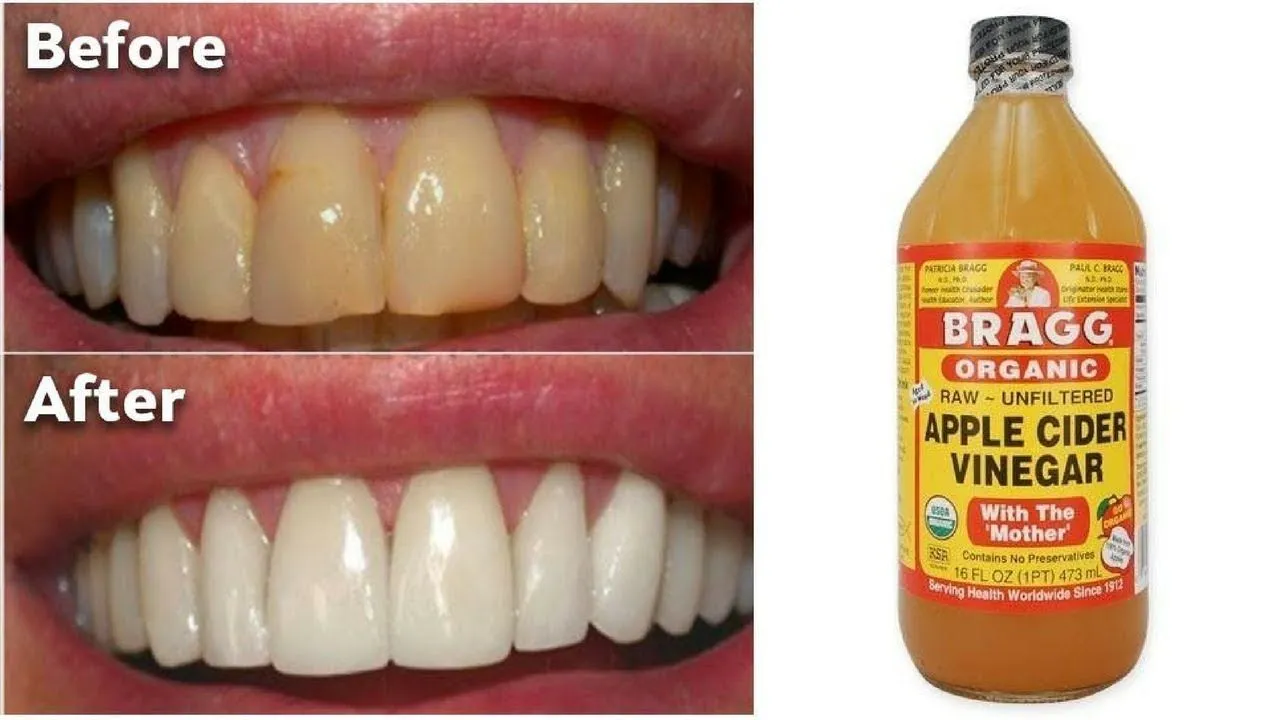Apple Cider Vinegar Teeth Whitening Overview
The quest for a brighter smile has led many to explore natural remedies and one such remedy gaining popularity is apple cider vinegar (ACV) for teeth whitening. This guide delves into the world of ACV for teeth whitening, exploring its potential benefits, step-by-step application, and important considerations to ensure safe and effective use. We’ll explore the science behind how ACV works and compare it to other teeth whitening methods.
What is Apple Cider Vinegar
Apple cider vinegar is a type of vinegar made from fermented apple juice. The fermentation process involves converting the sugars in apples into alcohol and then further processing it into acetic acid, the main active compound in ACV. ACV is known for its various health benefits, attributed to its antimicrobial and antioxidant properties. It is a staple in many homes for cooking, cleaning, and as a health supplement. The ‘mother’ in ACV, the cloudy substance, contains beneficial bacteria, proteins, and enzymes.
The Benefits of Apple Cider Vinegar

Beyond teeth whitening, ACV offers several health benefits. It can help in balancing blood sugar levels, aid in weight management, and improve digestion. It contains important vitamins and minerals. The acetic acid in ACV may also help to kill harmful bacteria, contributing to overall oral hygiene. Many people incorporate it into their daily routines for these health-promoting effects. Its versatility makes it a valued natural remedy for various health concerns.
How Apple Cider Vinegar Whitens Teeth
The teeth whitening properties of apple cider vinegar are primarily due to its acidity. Acetic acid can help remove stains and break down plaque on the teeth’s surface, which contributes to a whiter appearance. ACV also has a mild abrasive effect, which can help to polish the teeth, further improving their brightness. Regular but cautious use of ACV might help to remove surface stains caused by coffee, tea, and other staining foods or drinks.
Apple Cider Vinegar Teeth Whitening Step by Step Guide
Preparation and Materials
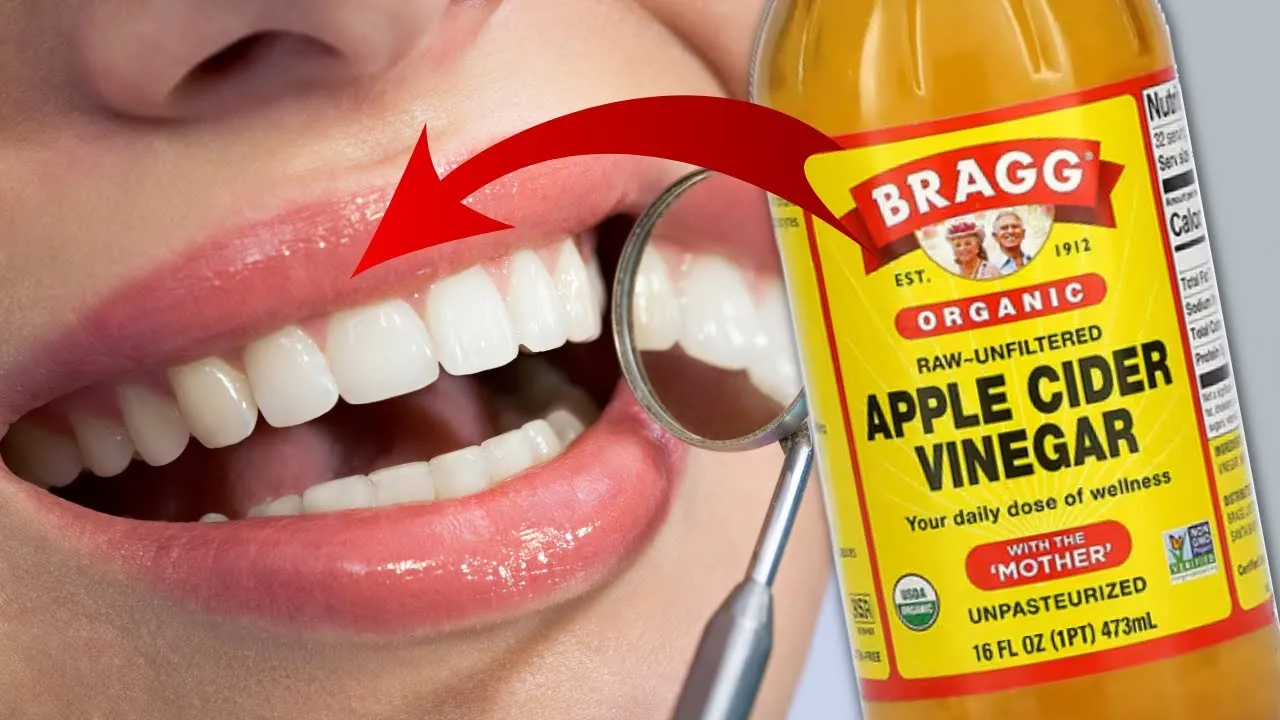
To use ACV for teeth whitening, you will need high-quality, unfiltered apple cider vinegar. You’ll also need a clean cup, water, and optionally, a straw. It’s crucial to dilute the ACV with water to minimize potential risks. A straw is also recommended to reduce direct contact with the teeth. Always use ACV in moderation and never apply it undiluted. Prioritizing safety and following recommended procedures are essential for successful results.
The ACV Rinse Method
For the ACV rinse method, mix one teaspoon of ACV with a cup of water. Swish this solution in your mouth for about 30 seconds. Be careful not to swallow it. After rinsing with ACV, rinse your mouth with plain water to remove any lingering acid. Finally, brush your teeth with your regular toothpaste. This method is designed for moderate use and should be done no more than once or twice a week. Always monitor your teeth for any signs of sensitivity.
The Dilution Technique
The dilution technique involves a similar ACV and water mixture. Dip a cotton swab into the diluted ACV solution and gently apply it to your teeth, focusing on stained areas. Leave the solution on your teeth for about a minute. After application, rinse your mouth with water, and then brush your teeth. This method allows for targeted application and reduced overall exposure. Remember, moderation is key, and observing your teeth’s reaction is essential.
Important Considerations for Application

Always dilute ACV before using it on your teeth. Never use undiluted ACV, as it can be very harsh on your enamel. Limit the frequency of use to avoid enamel erosion. Start with a lower concentration of ACV and water, gradually increasing as needed. Monitor your teeth for any signs of sensitivity or discomfort. If you experience any adverse effects, stop using ACV immediately and consult a dentist. This approach helps to balance achieving desired outcomes with safeguarding oral health.
Potential Risks and Side Effects of ACV
Tooth Sensitivity and Erosion
The high acidity of ACV can erode tooth enamel over time, leading to increased tooth sensitivity and making teeth more vulnerable to cavities. Enamel erosion can also change the appearance of your teeth. If you experience increased sensitivity or discomfort after using ACV, you should stop using it and consult your dentist. This can result in lasting oral health problems and the need for professional dental treatment. This makes monitoring for any side effects critical.
Enamel Damage Prevention
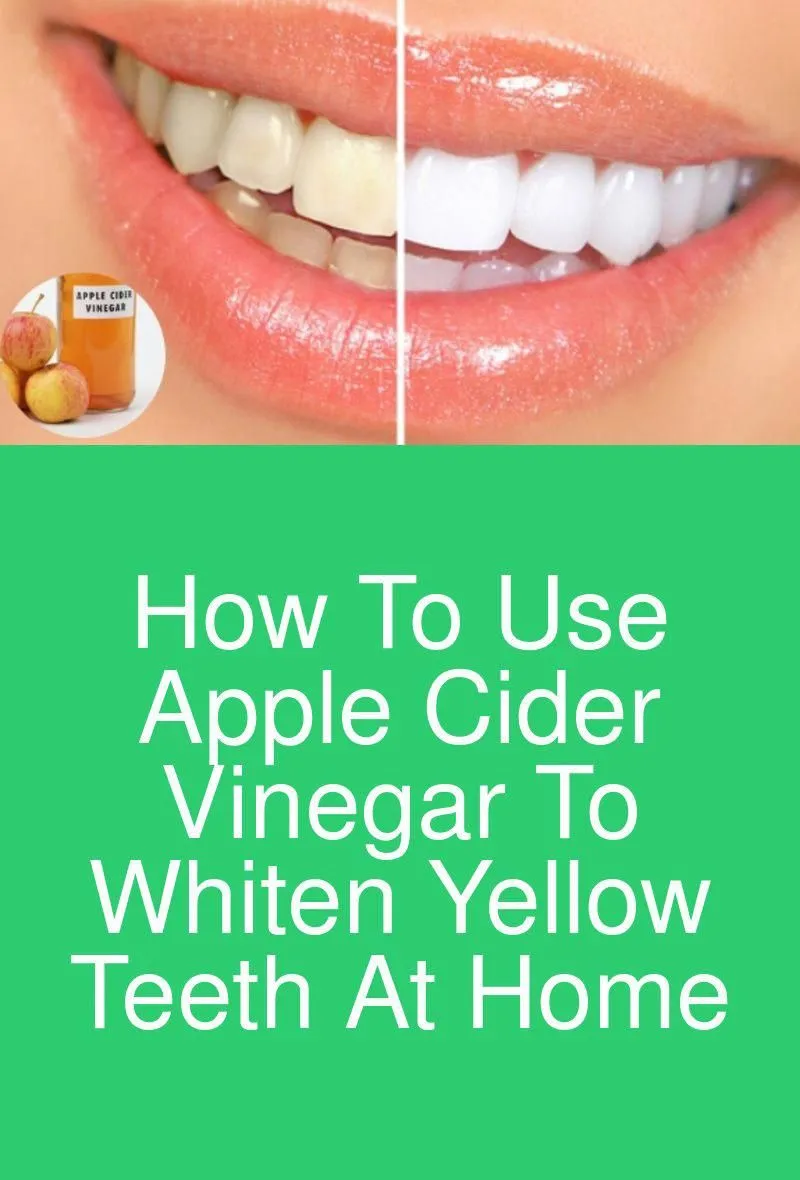
To prevent enamel damage, always dilute ACV with water. Use ACV sparingly, no more than once or twice a week. Rinse your mouth thoroughly with water after each application. Wait at least 30 minutes after using ACV before brushing your teeth to allow the enamel to remineralize. You can also consider using toothpaste designed for enamel protection. These measures are important to ensure teeth stay healthy while using ACV for whitening.
Tips to Minimize Risks
To minimize risks, use a straw to direct the ACV solution away from your teeth. Rinse your mouth with water immediately after rinsing with ACV. Brush your teeth gently to avoid further enamel erosion. Regular dental check-ups are essential to monitor your oral health. Listen to your teeth and stop using ACV if you notice any changes in sensitivity or discomfort. Consulting with a dentist before starting any teeth whitening treatment is always advisable.
Alternative Teeth Whitening Methods
Professional Teeth Whitening
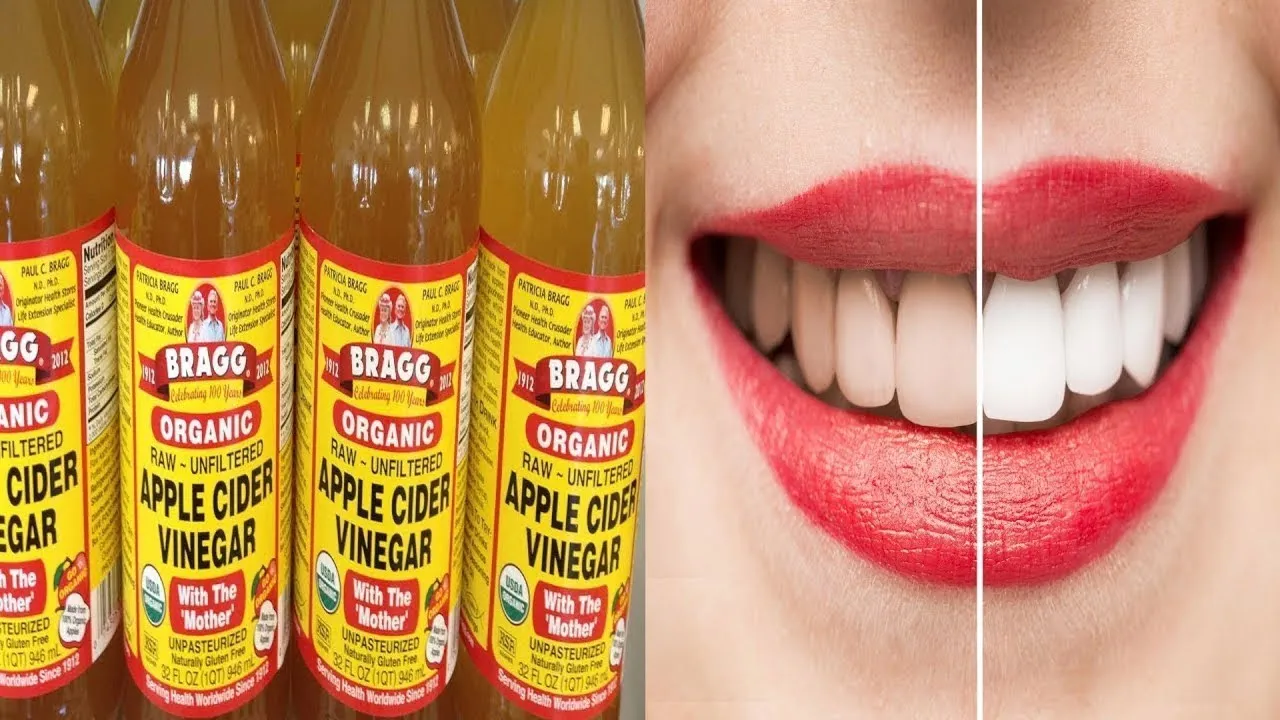
Professional teeth whitening, performed by a dentist, offers the most effective and safest results. These treatments use high-concentration whitening agents under controlled conditions. Dentists can assess the health of your teeth and gums before treatment, reducing the risk of complications. Professional whitening can achieve dramatic results quickly. It is a more costly option but is often a better choice for those looking for significant and safe teeth whitening.
Over the Counter Whitening Products
Over-the-counter teeth whitening products include whitening toothpaste, strips, and gels. These products are generally less effective than professional treatments but can provide noticeable results. They vary in their concentration of whitening agents and can be a convenient option for some individuals. Always read the product instructions carefully and follow them. It is important to be aware of the potential side effects and to consult with a dentist if you experience any issues.
Natural Whitening Alternatives
Besides apple cider vinegar, other natural alternatives for teeth whitening include baking soda and hydrogen peroxide mixture. Another option is oil pulling with coconut oil, which can help remove bacteria and plaque. However, these methods have varying effectiveness, and caution is still advised. Consult your dentist before trying any of these alternatives. Natural methods should be used as part of a broader oral care routine, including brushing and flossing.
Conclusion
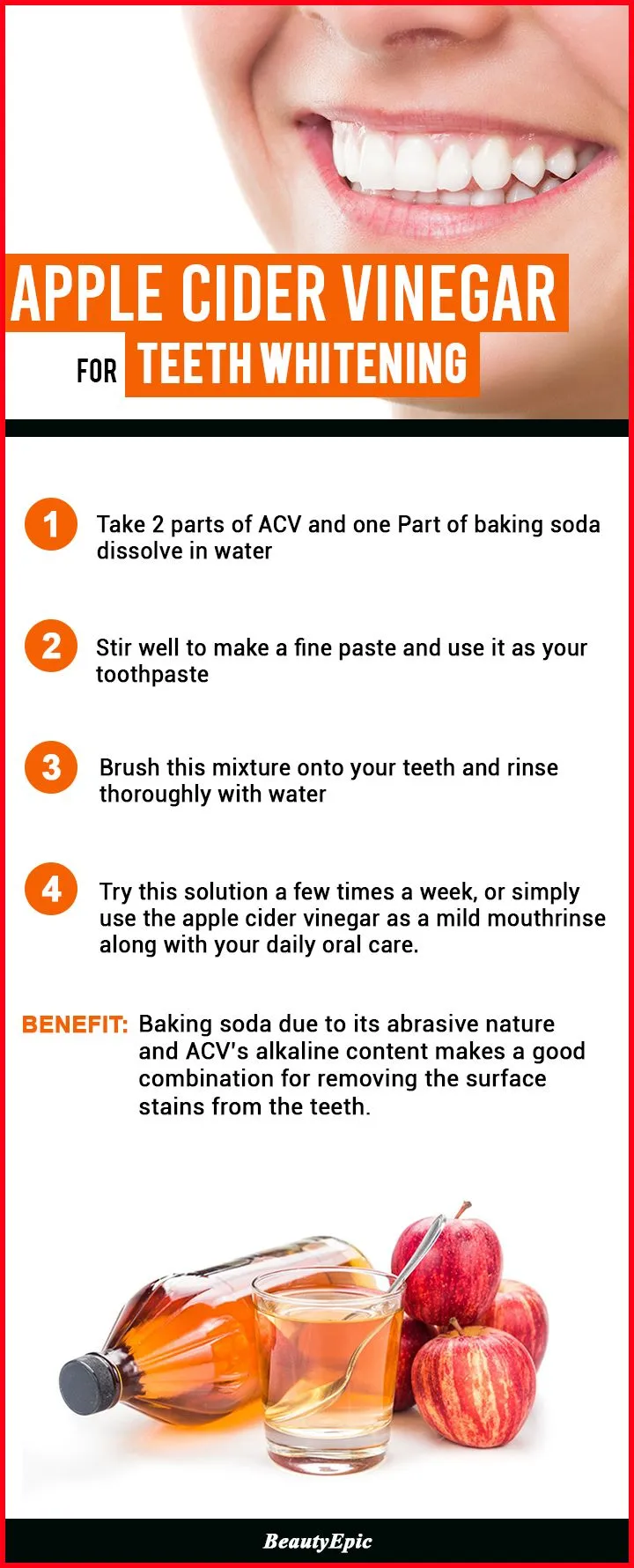
Apple cider vinegar can be a natural option for teeth whitening, but it is crucial to approach it with caution. Dilution, moderation, and careful monitoring of your teeth are vital. While ACV might help remove surface stains, it also poses risks like enamel erosion and increased sensitivity. When considering ACV or any teeth whitening method, consulting with a dental professional is important for safe and effective results. Prioritizing your oral health through informed choices will help you to achieve a brighter and healthier smile.
